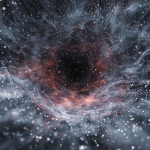If you thought dark matter was mysterious, wait until you meet its even stranger cousin: dark energy. While dark matter acts like an invisible glue holding galaxies together, dark energy does the opposite – it pushes the universe apart. Many scientists contend that dark energy makes up nearly 70% of the entire universe, and yet we still don’t know exactly what it is.
So, what do scientists mean when they talk about dark energy, and why does it matter for the future of the cosmos?
The Discovery of Dark Energy
For much of the 20th century, astronomers debated whether the universe would expand forever or eventually collapse back on itself under gravity. But in the late 1990s, two independent teams made a shocking discovery: the expansion of the universe isn’t slowing down. In fact, it’s speeding up.
They discovered this by studying distant exploding stars called Type Ia supernovae, which act like cosmic “standard candles” because they all shine with about the same brightness. By measuring how faint they appeared, astronomers could calculate their distance. The results showed that galaxies were farther away than expected, meaning the universe’s expansion had accelerated (NASA; Nobel Prize).
To explain this cosmic acceleration, scientists proposed the existence of dark energy – a mysterious force or property of space that counteracts gravity and drives galaxies apart.
Dark Matter vs. Dark Energy
It’s easy to confuse the two, but here’s the difference:
-
Dark matter adds gravity. It’s an invisible form of matter that pulls things together.
-
Dark energy resists gravity. It pushes space itself to expand faster and faster.
Both are invisible, both are mysterious, but they play opposite roles in shaping the universe.
What Could Dark Energy Be?
No one knows for sure, but here are some of the leading ideas:
-
Cosmological Constant
Einstein originally introduced a mathematical “fudge factor” called the cosmological constant to keep the universe static in his equations. Later, when the expansion of the universe was discovered, he abandoned it, calling it his “greatest blunder.” Ironically, the cosmological constant fits perfectly as a simple explanation of dark energy – it’s a constant energy density filling space. -
Quantum Vacuum Energy
In quantum physics, even “empty” space isn’t truly empty. It bubbles with virtual particles that pop in and out of existence. Some physicists think this vacuum energy could be the source of dark energy. However, calculations of its strength don’t match observations (they’re off by an absurd factor of 10¹²⁰!). More exploration is clearly needed here. -
New Physics
It’s possible dark energy isn’t a substance at all, but a sign that our understanding of gravity or cosmology is incomplete. Some theories propose new particles or fields, while others suggest modifications to Einstein’s theory of general relativity (ESA).
Why Dark Energy Matters
Dark energy isn’t a mere curiosity. It may decide the ultimate fate of the universe. No pressure. 🙂 Here’s why:
-
If dark energy stays constant, the universe will keep expanding forever, with galaxies drifting farther apart until the cosmos becomes cold and dark.
-
If it grows stronger, expansion could accelerate so much that even atoms are ripped apart; a scenario called the Big Rip.
-
If it weakens or reverses, gravity might one day halt expansion and pull everything back together in a Big Crunch.
At present, the data suggest dark energy is acting like a cosmological constant, leading to a “Big Chill” where the universe expands forever. But the truth is still uncertain.
Fascinating Facts About Dark Energy
-
Most of the universe: Mathematically, it appears that dark energy makes up about 68-70% of the cosmos, while dark matter is 27% and ordinary matter only 5%.
-
Nobel Prize discovery: The 2011 Nobel Prize in Physics was awarded to the scientists who discovered the accelerating expansion of the universe.
-
Mapping the cosmos: Surveys like the Dark Energy Survey (DES) and the upcoming Euclid space telescope are designed to probe its effects more precisely.
-
It’s everywhere: Unlike dark matter, which clumps around galaxies, dark energy seems to be evenly spread throughout space.
-
We may never “see” it: Dark energy might not be something we can detect directly – it could only be understood through its effect on cosmic expansion.
Questions to Ponder
-
Why might the expansion of the universe have begun accelerating only a few billion years ago?
-
If dark energy is vacuum energy, what does that say about the nature of “nothing”?
-
How could studying dark energy change our understanding of gravity and physics itself?
-
What are the philosophical implications if most of the universe is made of something we can’t directly observe?
-
If the universe ends in a Big Rip or Big Chill, how does that shape our perspective on life today?
Dark energy is a humbling reminder that even with centuries of science, the cosmos still holds profound mysteries. While we can see its fingerprints in the expansion of galaxies, the true nature of dark energy remains one of the greatest unanswered questions in physics – waiting for the next generation of curious minds to solve.

